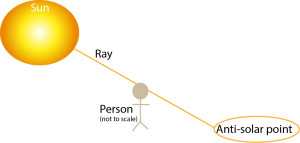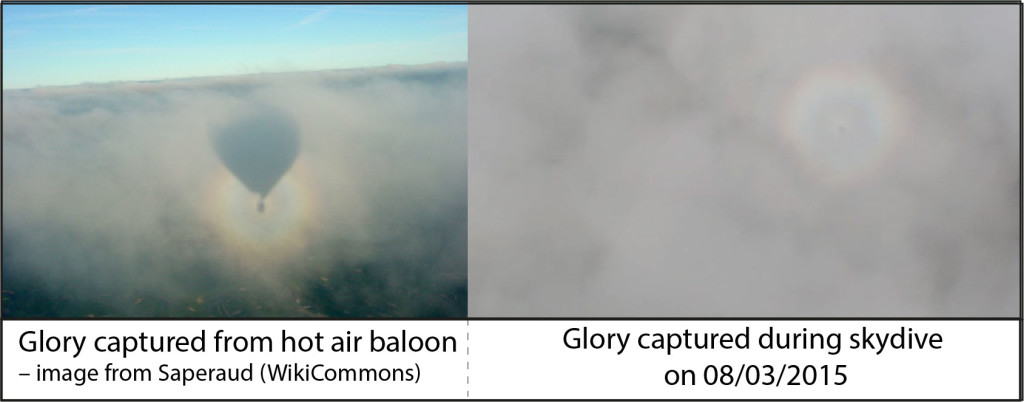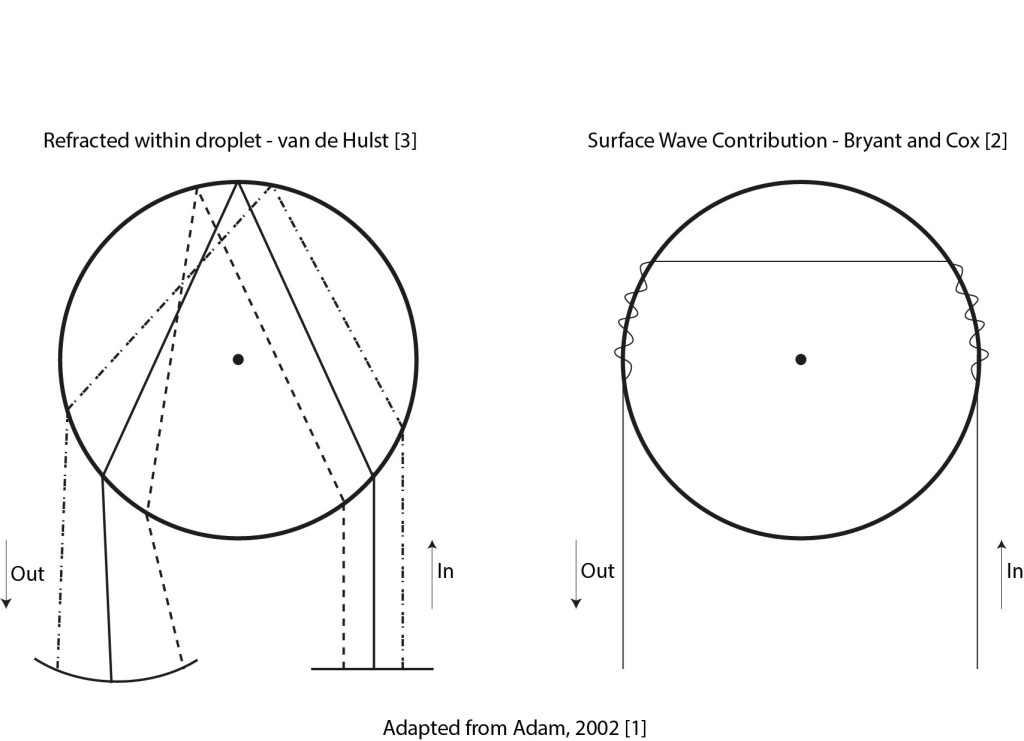I was dangling out of an aeroplane hatch, my legs stretching towards the ground that lay a dizzying 3,657 meters below me. The air was roaring in my ears. My only lifeline was the instructor I was strapped to, a burly 6ft man called Kevin who, on the count of ‘Ready, three, two, one’, eased us out through the hatch and our descent to the ground began. Surely I should be feeling some apprehension, fear or stress…. all I felt was a giddying excitement; today I was going to descend through the troposphere, falling back to the ground with a little help from gravity and would experience the atmosphere through a totally new and personal perspective.
Suddenly we were hurtling through the air. My eyes streaming. Cheeks buffeted by the wind. The air resistance was enormous and I struggled to keep my arms out. This was brilliant! After 30 seconds of exhilarating free-fall the canopy was deployed and I could appreciate the beauty of the troposphere. The weather was sunny and thermals had created banks of Cumulus Humilis clouds which we were about to travel through. Then, to my complete amazement, we saw a stunning optical illusion – a glory! I didn’t know what it was at the time – but I have done my research and I want to share with you the story behind glorious glories.
Glories, also known as anti-coronae, are created under very specific conditions. The first documented sighting was by a French scientific expedition in 1735 [1]. The crew were ascending the Peruvian Andes and early one morning, as they passed through a cloud layer, they turned and spotted glories. They appeared as bright concentric rings of light with the same colour spectrum as rainbows; violet in the centre through to red on the outermost ring (see above images). The team were astonished that they could all see multiple shadows of their comrades but the glory only appeared above their own shadows head. It seemed like a miracle to the expedition party who, back in the 1700’s had little scientific resources to explain what they had seen. It wouldn’t be until 1947 when van de Hulst would publish the seminal work A Theory of the Anti-Coronae [3] outlining a mechanism for glory formation. Thankfully in the modern era there is a huge wealth of scientific information readily accessible that made it quite easy for me to track down the necessary conditions for glory formation.
Where?
Crucially glories only occur when there is backscattering of light within cloud droplets and the droplet has to be between 4 and 25 micrometres in diameter (one micrometer is approximately one quarter the diameter of a human hair!). Due to the droplet size condition these visible phenomenon are governed by Mie Theory. Glories form on the observers anti-solar point (see diagram right). So this explains why each observer appears to get their own individual glory – because we all have our own anti-solar point. This also explains why you will only ever see them when you are above the clouds – as the 1735 expedition party and I both were when the glory sightings occurred.
phenomenon are governed by Mie Theory. Glories form on the observers anti-solar point (see diagram right). So this explains why each observer appears to get their own individual glory – because we all have our own anti-solar point. This also explains why you will only ever see them when you are above the clouds – as the 1735 expedition party and I both were when the glory sightings occurred.
Why?
Stating the conditions in which they occur in is quite easy; however convincingly demonstrating the exact method of scattering is somewhat harder. There are different potential mechanisms documented in the literature and refraction of light within the cloud-droplet [3] does not appear to generate enough scattering to account for the strong concentric rings that are observed in nature [1]. Coupling the in-droplet refraction with surface wave contributions [1, 2] greatly enhances the strength of the back-scattering and could account for the bright optical phenomenon we see when climbing mountains, sky-diving and travelling in aeroplanes.
Conclusions
Glories are a beautiful optical phenomenon, we can see them and yet they have no tangible substance – they are unique to the observer. We can understand the electromagnetic theory that governs the waves involved in their development yet we still do not understand the exact mechanisms involved in their occurrence. They are a wonderful example of how beautiful yet bafflingly complicated the natural world is.
References
[1] Adam, J. A. The mathematical physics of rainbows and glories. Physics Reports, Volume 356, Issue 4-5, 229-365. (2002) http://adsabs.harvard.edu/abs/2002PhR…356..229A
[2] Bryant, H.C. and Cox, A.J. The Journal of the Optical Society of America. Volume 56 (1966) http://www.opticsinfobase.org/josa/abstract.cfm?uri=josa-56-11-1529
[3] Van de Hulst, H. C. A theory of the Anti-Coronae, The Journal of the Optical Society of America. Volume 37, 16-22 (1947) http://www.opticsinfobase.org/josa/abstract.cfm?URI=josa-37-1-16









